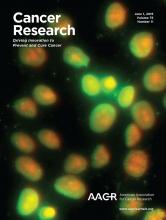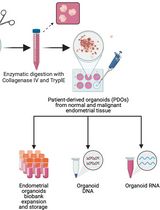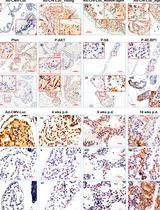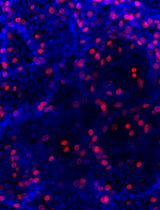- EN - English
- CN - 中文
High Fat Diet-induced Breast Cancer Model in Rat
高脂饮食诱导的大鼠乳腺癌模型
发布: 2016年07月05日第6卷第13期 DOI: 10.21769/BioProtoc.1852 浏览次数: 8588
评审: Masahiro MoritaPooja MehtaAnonymous reviewer(s)
Abstract
Obesity has been linked to breast cancer progression but the underlying mechanisms remain obscure. Being overweight or obese for a woman at the time she is diagnosed with breast cancer is linked to a high risk of recurrence regardless of treatment factors. In rodents, high body weight is also associated with increased incidence of spontaneous and chemically induced tumors. To study the complex interaction between the mammary epithelia and the microenvironment, with a focus on the mechanism underlying the role obesity plays in the regulation of the cancer stem cell traits and the development of mammary cancer in vivo, we have established a diet-induced obesity (DIO) rat model of breast cancer (Chang et al., 2015).
Keywords: Obesity (肥胖)Materials and Reagents
- 40 µm cell strainer (STEMCELL Technologies, catalog number: 27305 )
- Female Sprague-Dawley rats (Envigo, Harlan Laboratories, catalog number: Sprague Dawley® SD®)
- 1 ml, 26 G x 3/8 in. BD Tuberculin syringe with detachable needle, slip tip (BD Biosciences, catalog number: 309625 )
- N-methylnitrosourea (Sigma-Aldrich, catalog number: N1517 )
- Sodium chloride (Sigma-Aldrich, catalog number: S7653 )
- 10% neutral formalin (Sigma-Aldrich, catalog number: HT501128 )
- EpiCultTM-B Mouse Medium Kit (STEMCELL Technologies, catalog number: 05610 )
- 10x Gentle Collagenase/Hyaluronidase (STEMCELL Technologies, catalog number: 07919 )
- Hanks’ balanced salt solution modified (HBSS) (STEMCELL Technologies, catalog number: 37150 )
- Trypsin-EDTA
- Ammonium chloride (NH4Cl) (STEMCELL Technologies, catalog number: 07800 )
- 40 µm cell strainer (STEMCELL Technologies, catalog number: 27305)
- Fetal bovine serum (FBS) (Corning, catalog number: 35-011-CV )
- Flow Cytometry Stain Buffer (BD Biosciences, catalog number: 554656 )
- FITC-conjugated anti-OBR antibody (aa956-986, polyclonal antibody) (Lifespan Biosciences, catalog number: LS-C261832 )
- Regular rat chow diet (Envigo, catalog number: 8604 ) (see Recipes)
- Western diet (Research Diets, catalog number: D12079B ) (see Recipes)
- 0.9% saline (see Recipes)
- N-methylnitrosourea solution (see Recipes)
Equipment
- Dual-energy x-ray absorptometry (Lunar Corporation, model: Lunar PIXImus II Densitometer )
- Cell analyzer (BD Biosciences, model: BD FACSCanto II )
Software
- BD FACSDiva and FCS Express Flow Cytometry Software
Procedure
文章信息
版权信息
© 2016 The Authors; exclusive licensee Bio-protocol LLC.
如何引用
Wu, M. J. and Chang, C. J. (2016). High Fat Diet-induced Breast Cancer Model in Rat. Bio-protocol 6(13): e1852. DOI: 10.21769/BioProtoc.1852.
分类
癌症生物学 > 通用技术 > 动物模型
癌症生物学 > 增殖信号转导 > 肿瘤形成
癌症生物学 > 通用技术 > 肿瘤形成
您对这篇实验方法有问题吗?
在此处发布您的问题,我们将邀请本文作者来回答。同时,我们会将您的问题发布到Bio-protocol Exchange,以便寻求社区成员的帮助。
提问指南
+ 问题描述
写下详细的问题描述,包括所有有助于他人回答您问题的信息(例如实验过程、条件和相关图像等)。
Share
Bluesky
X
Copy link













